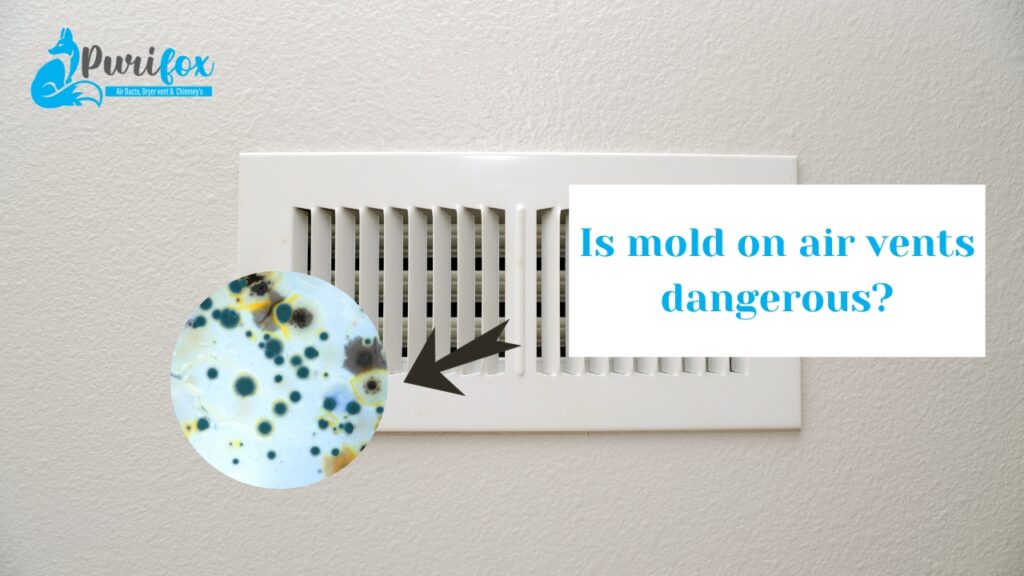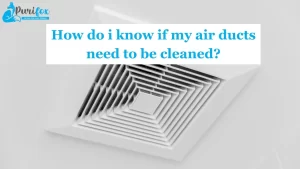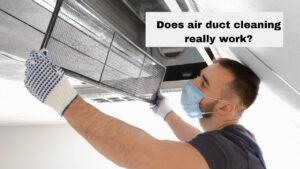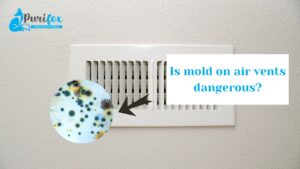The air vents in your home are essential for maintaining good indoor air quality. They help circulate air and remove pollutants, creating a healthier environment for you and your family. But what if there’s something lurking inside your air vents that you can’t see? Mold.
Mold is a type of fungus that can grow in damp and dark environments, like inside air vents. It can release spores into the air, which can cause a variety of health problems, including respiratory infections, allergic reactions, and asthma attacks.
But Is mold on air vents dangerous? The short answer is yes. In this blog, we’ll talk about what mold is, the risks it brings, and, most importantly, what you can do to deal with it.
Let’s explore the world of air vents, mold, and how it can affect your home and health.
What is Mold?
Mold is a type of fungus that can grow in damp, dark places. It is often found in basements, bathrooms, and kitchens. However, mold can also grow in other areas of your home, such as air vents, carpets, and furniture.
Mold in air vents is exactly what it sounds like—mold growing within the ducts or passages through which air circulates in your home. Air vents can provide the ideal conditions for its growth if there’s moisture present.
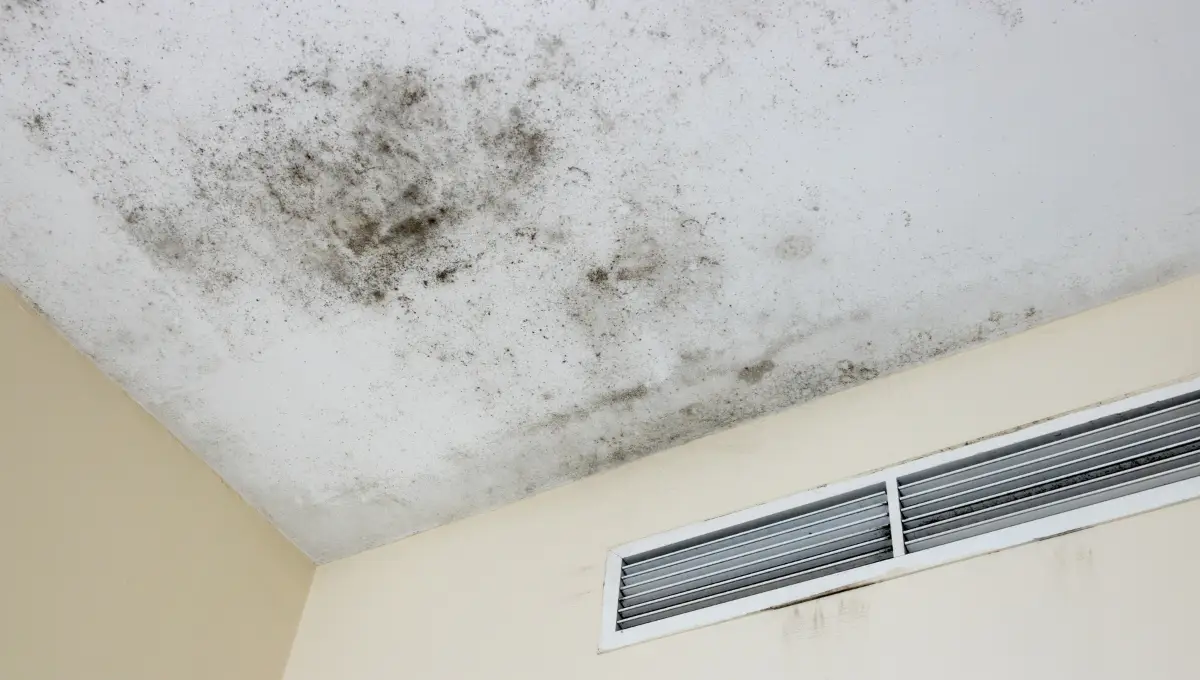
When mold starts to thrive in these spaces, it can spread and release tiny particles called spores into the air, potentially causing health issues if inhaled. These spores can be carried through the ventilation system, affecting the air quality in your home.
Mold can be in different colors, including black, white, green, and yellow. It can also have a different texture, such as furry, slimy, or powdery. Some molds have a strong musty odor, while others are odorless.
Is mold on air vents dangerous? A Hidden Threat
Whether or not mold on air vents is dangerous depends on a number of factors, including the type of mold, the amount of mold present, and the length of time you have been exposed to it.
Some types of mold are non-toxic and are unlikely to cause any health problems. However, other types of mold, such as black mold, can produce toxins that can be harmful to humans.
These toxins can cause a variety of health problems, including respiratory problems, skin irritation, and eye irritation. In some cases, mold exposure can even lead to serious health problems, such as lung infections and pneumonia.
The amount of mold present and the length of time you have been exposed to it also play a role in determining whether or not mold on air vents is dangerous. If there is a small amount of mold present and you have only been exposed to it for a short period of time, you are unlikely to experience any health problems.
However, if there is a large amount of mold present or you have been exposed to it for a long period of time, you are at increased risk of developing health problems.
Mold in Air Ducts Symptoms
As per mold in air ducts symptoms, the CDC states there are no fixed rules about how much mold is okay to have in a home. It’s essential to know that every home has a bit of mold.
However, if you have mold in your air vents, it can cause a variety of health problems, especially for people with allergies or asthma.
Here are some possible signs and symptoms of mold in air vents:
Musty Odor
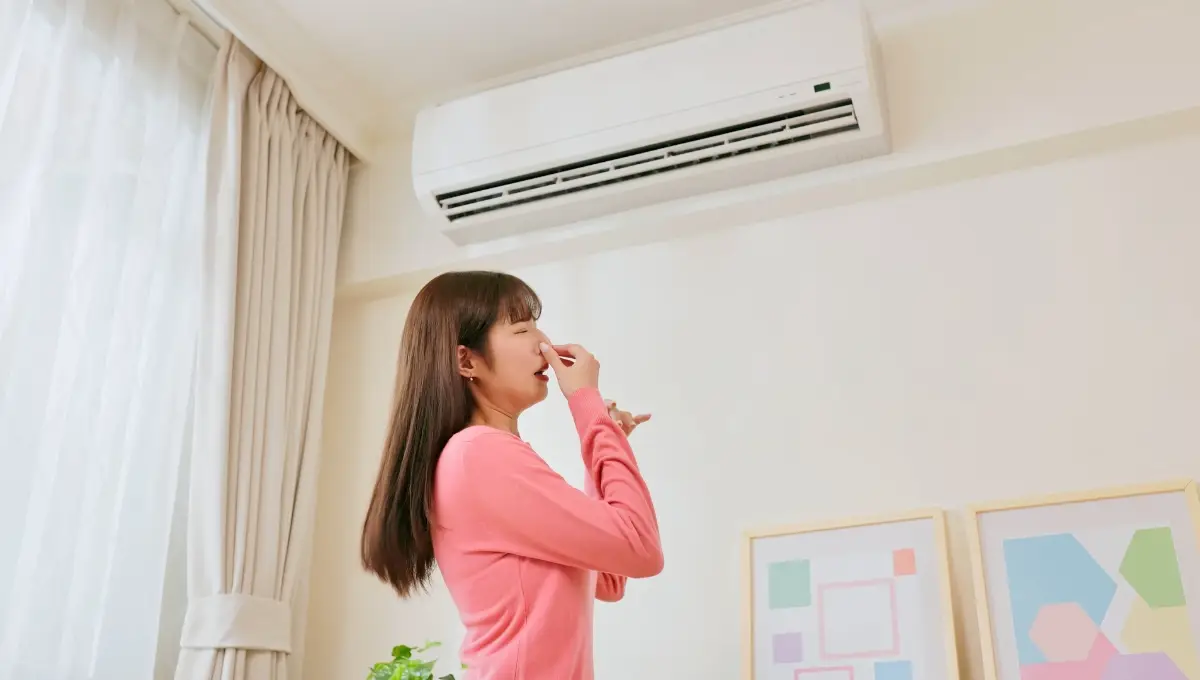
One of the most noticeable signs of mold in air vents is a musty or earthy smell. Mold produces volatile organic compounds (VOCs) that can create this distinctive odor. If you notice a musty odor coming from your air vents, especially when you turn on your heating or cooling system, it could be a sign of mold growth.
Allergic Reactions
Mold spores released from air vents can trigger allergic reactions in some individuals. Symptoms may include sneezing, coughing, runny or stuffy nose, itchy or watery eyes, and skin rashes.
Respiratory Issues
Prolonged exposure to mold in air vents can lead to more severe respiratory problems, especially for individuals with asthma or other respiratory conditions. Symptoms may include wheezing, shortness of breath, chest tightness, and an increased risk of respiratory infections.
Headaches and Fatigue
Mold exposure can sometimes cause headaches, fatigue, and difficulty concentrating. These symptoms are more likely in cases of prolonged exposure.
Skin Irritation
Direct contact with mold spores or mycotoxins produced by mold can lead to skin irritation, rashes, and itching.

Eye and Throat Irritation
Mold spores in the air can irritate the eyes, leading to redness, itching, and watering. They can also cause a sore or scratchy throat.
Cognitive and Neurological Symptoms
In rare cases, prolonged exposure to mold in air vents may lead to cognitive and neurological symptoms such as memory problems, confusion, and difficulty concentrating.
Visible Mold Growth
In some instances, you may be able to see mold growing in and around the air vents, especially if the area is moist and poorly ventilated. Mold can appear as discolored patches or a fuzzy, greenish-black growth.
Why Does Mold Grow in Air Vents?
Moisture Accumulation
Mold needs moisture to grow, and air vents can provide that moisture in a number of ways. For example, leaks in the roof or plumbing can cause water to drip into the air vents. Additionally, condensation can form on the inside of the vents, especially if they are not properly insulated.
Poor Ventilation
Inadequate airflow within the ventilation system can lead to stagnant air, trapping moisture and allowing mold to flourish. Insufficient ventilation inhibits the drying of damp areas, creating conditions conducive to mold growth.
Dust and Debris Accumulation
Dust, dirt, and organic debris that accumulate within air ducts serve as a food source for mold. Mold spores settle on these surfaces, and when combined with moisture, they can start to grow and spread.
Temperature Conditions
Air vents can experience temperature fluctuations due to the heating and cooling processes. Some molds thrive in specific temperature ranges, and the varying conditions within the vents might create favorable temperatures for mold growth.
Leaks or Water Intrusion
Water leaks from plumbing or roof leaks that seep into the ductwork or vents can create a damp environment, promoting mold growth. If not addressed promptly, this can perpetuate the mold issue.
Humidity Levels
High humidity levels, especially in areas with poor ventilation, can contribute significantly to mold growth. Humid environments foster the perfect conditions for mold to develop and spread.
How to get rid of mold in air vents
Getting rid of mold in air vents is crucial for maintaining a healthy indoor environment and preventing respiratory issues.
Mold in air vents can thrive in dark, damp conditions, and if left untreated, it can spread throughout your ventilation system, affecting the air quality in your home.
Identify the Mold
Before taking any action, inspect your air vents to confirm the presence of mold. Mold growth often appears as black or green spots, and there may be a musty odor. If you’re unsure, you may want to consult with a professional mold inspector.
Turn off your HVAC system
To prevent the spread of mold spores, turn off your heating, ventilation, and air conditioning (HVAC) system. This will help contain the mold and prevent it from circulating throughout your home during the cleaning process.
Clean Up the Mold
Now that you’ve identified the mold in your air vents, it’s time to clean it up. There are a few different methods you can use to do this, depending on the severity of the mold infestation.
For larger mold infestations, hidden mold, or if you have respiratory issues or allergies, it’s highly recommended to seek professional mold remediation services. Professionals have the expertise, equipment, and safety protocols to thoroughly clean your air ducts and ensure that all mold is eliminated.
Once the mold has been removed, it is important to identify and fix the underlying moisture problem that caused the mold to grow. This may involve repairing a leaky pipe or improving ventilation in the area.

Call Purifox for Professional Air Vent Mold Remediation
Discovering mold on your air vents can be a cause for concern, as it not only affects the efficiency of your HVAC system but also poses potential health risks.
Purifox is a professional mold remediation company that can help you safely and effectively remove mold from your air vents. We prioritize safety throughout the remediation process. Our team follows industry best practices and safety guidelines to protect both occupants and our technicians.
We use EPA-approved mold inhibitors and cleaning solutions to ensure effective remediation without compromising indoor air quality.
Our advanced tools help us pinpoint the extent of mold infestation, ensuring that every affected area within your air vents is addressed with precision.
Don’t wait until mold has caused serious health problems in your home. Call Purifox today (571) 244-2603 for professional air vent cleaning & to remove mold from your vent.
FAQs
Can I clean mold on air vents myself?
For small mold growth on vent covers, you can clean it yourself using a mold-killing solution and a stiff brush. However, for more extensive mold infestation or mold growth deep within the ducts, professional cleaning is highly recommended.
How can I prevent mold from growing in my air vents?
To prevent mold growth in your air vents, ensure proper ventilation in your home, especially in bathrooms and kitchens. Regularly clean your air vents and replace air filters as recommended by the manufacturer. If you have a history of mold problems, consider professional duct cleaning every two to three years.
Is mold on air vents a common problem?
Yes, mold on air vents is a common problem. Mold thrives in moist environments, and air vents can provide a perfect breeding ground for mold spores.
Is black mold in ac unit dangerous?
Yes, black mold in an AC unit can be dangerous. Black mold, also known as Stachybotrys chartarum, is a type of mold that can produce toxic substances called mycotoxins. These mycotoxins can cause a variety of health problems, including respiratory problems, skin irritation, headaches, fatigue, nausea, and vomiting. In severe cases, exposure to black mold can even lead to lung infections and neurological problems.
Does duct cleaning remove mold?
Yes, duct cleaning can remove mold from your ventilation system. Professional duct cleaners use specialized equipment and techniques to clean and sanitize the inside of your ducts, including the removal of mold spores, dust, dirt, and other contaminants.



